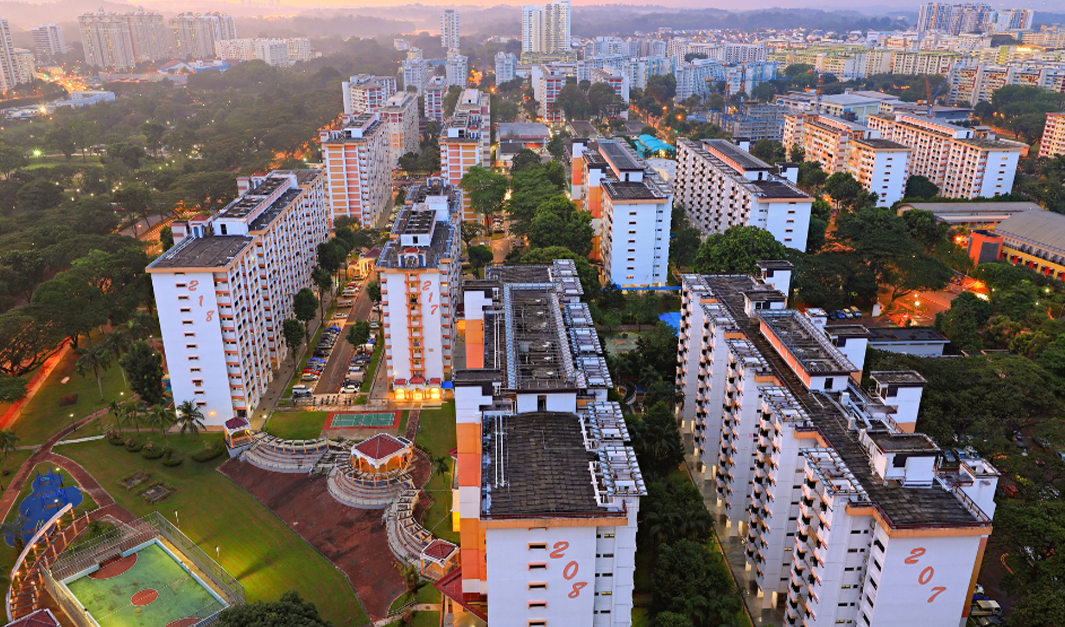On May 23, Singapore Minister for National Development Desmond Lee announced that Bukit Timah’s Turf City will be developed into a new residential enclave with up to 20,000 public and private homes.
The 176-hectare site housed the Singapore Turf Club prior to its move to Kranji in 1999. The land was leased out for lifestyle and recreational use until Dec 31, 2023, and its tenants included sports facilities and a shopping mall, The Grandstand.
The announcement marks the first time that public housing has been planned in Bukit Timah since the Toh Yi estate was built about 40 years ago. The area is known for its exclusive residential estates, consisting mostly of landed houses and private condominiums.
Many popular primary schools are located along Bukit Timah Road and Dunearn Road, such as Methodist Girls’ School, Raffles Girls’ Primary School and Nanyang Primary School.
The Turf City redevelopment is expected to transform the fabric of Bukit Timah, adding diversity in housing options in the area.
New public housing in Bukit Timah
The thousands of new homes in Turf City would multiply the population of the surrounding Swiss Club area, which, as of the 2020 census, is home to 5,340 residents.
The Turf City redevelopment will take place in phases over 20 to 30 years. Infrastructure such as power, water, sewerage and transport networks will need to be expanded before sites in the area can be sold to private developers for residential and commercial developments.
Future Build-to-Order (BTO) flats will also probably occur years later to align with the completion of the second phase of the Cross-Island Line by 2032.
With high transaction prices in the Bukit Timah area, BTO flats planned in the area are likely to fall under the Prime or Plus housing models, with mostly 3-room and 4-room flats to ensure that the BTO prices are affordable for a wider range of buyers.
Public housing is expected to be planned around the Turf City MRT station, which will be situated near the former Grandstand mall. A more densely built estate could increase commuters for the future Turf City MRT station and create demand that would support new amenities, such as shopping malls, supermarkets and food and beverage outlets.
Car-lite estate
Turf City will be planned as a car-lite estate with fewer carpark provisions and more space for greenery and amenities.
Carpark lots will be prioritised for the first car of resident households, which would cap growth in the number of private cars. This could avoid overstretching traffic loads on Dunearn Road and Bukit Timah Road, the two major thoroughfares connecting Turf City to the city centre, when thousands of families move into the area.
In tandem with future housing development plans and infrastructure works, studies will be conducted on widening Eng Neo Avenue to three-lane roads in each direction and improving the junctions connecting Dunearn Road and Bukit Timah Road in anticipation of increases in traffic loads.
The future Turf City estate will also be pedestrian-friendly, with more sheltered walkways and bicycle parking facilities. Shops, community and recreational facilities will be built within a 10-minute walk from homes.
Bukit Timah has a high proportion of residents who drive to work, with the 2020 census finding that about half of employed Bukit Timah residents commute to their jobs by car only.
This may change, however, with the availability of new MRT stations. Turf City will be accessible by two MRT stations: The upcoming Turf City MRT station on the Cross-Island Line, and the Sixth Avenue MRT Station on the Downtown Line.
In a research paper by Diao Mi, a Tongji University professor, Dai Fangzhou, a research fellow at NUS Cities and I, we found that people switched from private cars to public transport after the opening of a new MRT Line in their vicinity. The opening of the Circle Line has resulted in a 6.4 percentage-point increase in the share of residents who take rail transit and a 6.7 percentage-point decline in the share of those who use cars.
More diverse housing mix
Areas close to Bukit Timah Turf City, such as Watten Estate, Sixth Avenue, Namly Drive and Coronation Road, have high concentrations of low-rise housing estates that are home to many high-income Singaporean families. These estates were previously safeguarded with height controls on new developments.
In contrast, high-density, high-rise private condominiums such as Maplewood, the Tessarina, the Nexus and the Cascadia are found along the stretch of Bukit Timah Road between Sixth Avenue and Jalan Anak Bukit.
Many parents move to Bukit Timah to improve their children’s chances of being admitted into popular primary schools. However, new launches have been limited in the area, which significantly drives up home prices. Perfect Ten, launched in 2021 by Pacific Enterprises Development, has sold at over S$3,600 per square foot, while Watten House, launched in 2023 by UOL, has sold at over S$3,200 per square foot.
Many parents could, hence, be priced out of living in Bukit Timah. If they cannot afford to own or rent property within 1km to 2km from popular schools in the area, and they would not be able to secure a place for their children through distance-based prioritisation in the Primary 1 registration exercise.
With more land set aside for new private residential developments in Turf City, developers could increase the supply and help moderate prices of new homes in Bukit Timah.
New BTO flats and mid-priced private housing will diversify the area’s housing mix, which will lessen the concentration of high-income families in time. The 20,000 new public and private homes could help Bukit Timah and its popular schools become less segregated and more inclusive.
The article first appeared in CNA.




